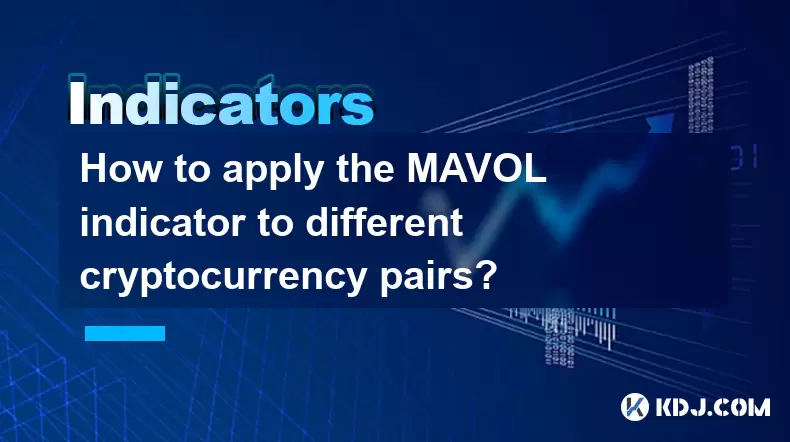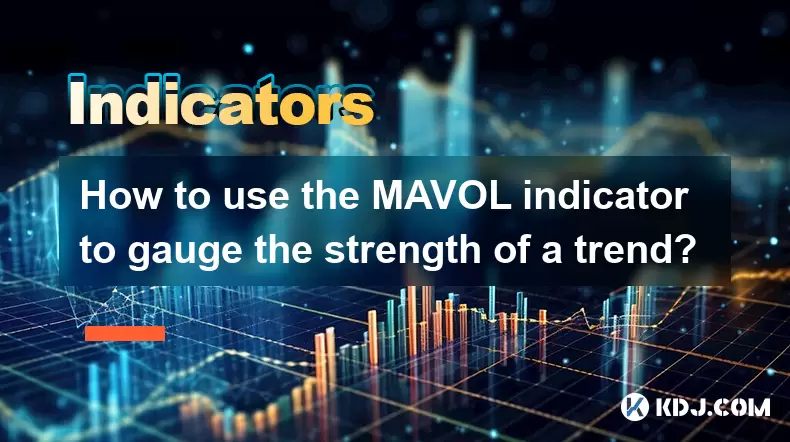-
 Bitcoin
Bitcoin $118400
0.47% -
 Ethereum
Ethereum $3836
2.20% -
 XRP
XRP $3.157
2.98% -
 Tether USDt
Tether USDt $0.9999
-0.03% -
 BNB
BNB $801.5
1.31% -
 Solana
Solana $180.9
2.07% -
 USDC
USDC $0.9999
-0.02% -
 Dogecoin
Dogecoin $0.2225
2.50% -
 TRON
TRON $0.3285
-1.02% -
 Cardano
Cardano $0.7789
2.60% -
 Hyperliquid
Hyperliquid $43.60
2.39% -
 Sui
Sui $3.892
4.41% -
 Stellar
Stellar $0.4229
3.34% -
 Chainlink
Chainlink $18.01
3.98% -
 Hedera
Hedera $0.2745
6.77% -
 Bitcoin Cash
Bitcoin Cash $582.3
3.38% -
 Avalanche
Avalanche $23.77
1.04% -
 Ethena USDe
Ethena USDe $1.001
0.01% -
 Toncoin
Toncoin $3.493
3.59% -
 Litecoin
Litecoin $110.0
2.48% -
 UNUS SED LEO
UNUS SED LEO $8.936
-0.37% -
 Shiba Inu
Shiba Inu $0.00001304
2.49% -
 Uniswap
Uniswap $9.999
1.09% -
 Polkadot
Polkadot $3.897
3.26% -
 Monero
Monero $308.6
-0.83% -
 Dai
Dai $0.9999
-0.01% -
 Bitget Token
Bitget Token $4.504
-0.04% -
 Pepe
Pepe $0.00001154
2.95% -
 Cronos
Cronos $0.1471
3.06% -
 Ethena
Ethena $0.6691
19.53%
How to identify sell signals with the AVL indicator?
The AVL indicator helps spot sell signals through bearish divergence, crossovers below its moving average, and declining volume during price breakdowns, confirming distribution.
Jul 31, 2025 at 07:09 am

Understanding the AVL Indicator and Its Core Components
The AVL indicator, also known as the Accumulation Volume Line, is a volume-based technical analysis tool used to assess the strength behind price movements. It combines price and volume data to determine whether a cryptocurrency is being accumulated or distributed. When identifying sell signals, the primary focus lies in detecting distribution phases—periods where large holders are selling off assets. The core formula of the AVL involves cumulative volume adjusted by the direction of price movement: if the closing price is higher than the previous close, volume is added; if lower, volume is subtracted. This cumulative total forms a line that moves in tandem with price action. Traders watch for divergences between the AVL line and price trends as key warning signs. A rising price accompanied by a flattening or declining AVL suggests weakening momentum and potential distribution.
Spotting Bearish Divergence with the AVL Indicator
One of the most reliable sell signals using the AVL indicator is bearish divergence. This occurs when the price of a cryptocurrency reaches a new high, but the AVL fails to surpass its previous high—indicating a lack of supporting volume. This misalignment suggests that despite upward price movement, buying pressure is waning. To detect this pattern:
- Observe the price chart for a series of higher highs.
- Simultaneously, monitor the AVL line for lower highs or a plateau.
- Confirm the divergence by ensuring both peaks are clearly defined and aligned in time.
- Use additional confirmation tools such as RSI or MACD to avoid false signals.
For example, if Bitcoin climbs from $60,000 to $65,000 while the AVL line drops from 1.2 billion to 1.1 billion cumulative volume units, this signals weakening demand. Traders interpret this as a distribution phase, where smart money may be exiting positions ahead of a reversal.
AVL Crossovers and Trend Reversals
Another method to identify sell signals involves monitoring the relationship between the AVL line and a moving average of the AVL itself. A common strategy uses a 9-period simple moving average (SMA) applied directly to the AVL values. When the AVL line crosses below its moving average, it indicates a shift from accumulation to distribution. To execute this:
- Apply the AVL indicator to your trading chart (available on platforms like TradingView or MetaTrader).
- Add a 9-period SMA overlay on the AVL line.
- Watch for the AVL line to move above the SMA during uptrends—this confirms accumulation.
- When the AVL line crosses below the SMA, especially after a prolonged uptrend, it generates a potential sell signal.
This crossover is more reliable when it occurs at overbought levels or after a significant rally. For instance, if Ethereum’s price has risen 30% over two weeks and the AVL crosses below its SMA, it may indicate that volume support has collapsed, increasing the likelihood of a downward correction.
Volume Confirmation During Price Breakdowns
A critical aspect of validating sell signals with the AVL indicator is analyzing volume during breakdowns. When a cryptocurrency breaks below a key support level, the accompanying volume should be reflected in the AVL. A genuine breakdown is confirmed when the AVL shows a sharp decline, indicating strong selling pressure. Steps to verify:
- Identify a clear support level on the price chart (e.g., a horizontal line or trendline).
- Wait for the price to close below this level.
- Check the AVL reading at the time of the breakdown—look for a significant drop in the AVL line.
- Ensure the volume during the breakdown candle is higher than the average volume of the prior 10 candles.
If the AVL drops sharply during the breakdown, it confirms that the move is driven by real selling activity, not just price volatility. Conversely, if the AVL remains flat or rises slightly, the breakdown may be a false signal or a shakeout of weak hands.
Using AVL in Conjunction with Price Patterns
The AVL indicator gains more predictive power when combined with established price patterns such as double tops, head and shoulders, or rising wedges. These patterns often precede reversals, and the AVL can confirm whether the reversal is supported by volume. For a head and shoulders pattern:
- The left shoulder should show a rising AVL, indicating accumulation.
- The head may show a similar or slightly lower AVL peak—early sign of weakening.
- The right shoulder should display a noticeably lower AVL than the head, even if price is near the same level.
- The breakdown below the neckline should coincide with a sharp drop in AVL.
This confluence of pattern and volume confirmation strengthens the sell signal. For example, if Solana forms a head and shoulders top at $100, and the AVL on the right shoulder is 20% lower than on the head, it suggests distribution is underway. A close below the neckline with increasing negative AVL movement reinforces the decision to sell or short.
Setting Up Alerts and Practical Execution
To act swiftly on sell signals from the AVL indicator, traders should set up real-time alerts. On TradingView:
- Open the chart of the desired cryptocurrency.
- Click on "Indicators" and search for "Accumulation Volume Line" or manually input the formula:
AVL = AVL[1] + (close > close[1] ? volume : (close < close[1] ? -volume : 0)). - Add the indicator to the chart.
- Click the "Alerts" button and create a custom condition:
AVL crosses below AVL_SMA(9). - Set notification preferences (email, push, webhook).
- Repeat for divergence detection by comparing price highs with AVL highs using script logic.
When an alert triggers, review the full context—check for resistance levels, news events, and broader market sentiment. Execute the sell order using a limit or market order depending on urgency. Always set a stop-loss above the recent swing high to manage risk.
Frequently Asked Questions
Can the AVL indicator be used on all timeframes?
Yes, the AVL indicator functions on all timeframes—from 1-minute scalping charts to weekly swing trading views. However, signals on higher timeframes (4-hour, daily) tend to be more reliable due to reduced noise and stronger volume data. On lower timeframes, false signals may occur due to low trading volume or market manipulation.
What is the difference between AVL and On-Balance Volume (OBV)?
While both are cumulative volume indicators, the AVL only considers close-to-close price changes to determine volume addition or subtraction. OBV, on the other hand, may include intraday price movement in some variations. AVL is considered more precise for detecting subtle shifts in buying and selling pressure.
Does the AVL work well in sideways or ranging markets?
In ranging markets, the AVL tends to move horizontally, reflecting balanced buying and selling. It is less effective for generating sell signals in such conditions because divergence and crossovers may produce frequent false triggers. It performs best in trending markets with clear directional volume flow.
How do I adjust the AVL for different cryptocurrencies with varying liquidity?
No parameter adjustment is needed in the AVL formula itself, as it is based on relative price and volume changes. However, for low-liquidity altcoins, consider combining AVL with a volume filter—only act on signals when volume exceeds the 20-period average—to avoid whipsaws caused by thin markets.
Disclaimer:info@kdj.com
The information provided is not trading advice. kdj.com does not assume any responsibility for any investments made based on the information provided in this article. Cryptocurrencies are highly volatile and it is highly recommended that you invest with caution after thorough research!
If you believe that the content used on this website infringes your copyright, please contact us immediately (info@kdj.com) and we will delete it promptly.
- BCH, FET, BlockDAG: Decoding the Crypto Buzz
- 2025-08-01 01:16:37
- Dogecoin to the Moon? Analyzing the Potential for a New All-Time High
- 2025-08-01 00:32:48
- Silver, Gold, and Finish: Spotting the Trends in Precious Metals
- 2025-08-01 00:32:48
- Ozak AI: Can This Underdog Crypto Achieve a Bull Run to $1?
- 2025-07-31 22:30:12
- Coinbase Breach: Navigating Insider Risk and Bolstering Security
- 2025-07-31 23:11:55
- Bitcoin Rebounds, WeWake Presale Gains Traction: What's the Buzz?
- 2025-07-31 22:30:12
Related knowledge

What does it signify when the MACD crosses below the zero line?
Aug 01,2025 at 01:43am
Understanding the MACD IndicatorThe Moving Average Convergence Divergence (MACD) is one of the most widely used technical analysis tools in the crypto...

How does the MACD histogram show momentum?
Aug 01,2025 at 01:16am
Understanding the MACD Histogram and Its Role in Cryptocurrency TradingThe MACD histogram is a visual representation of the difference between the MAC...

What is a MACD crossover?
Jul 31,2025 at 11:52pm
Understanding the Role of Private Keys in Cryptocurrency SecurityIn the world of cryptocurrency, private keys are the cornerstone of ownership and con...

How can you use the MACD histogram to determine trend strength?
Jul 31,2025 at 11:10pm
Understanding the MACD Histogram and Its ComponentsThe MACD (Moving Average Convergence Divergence) histogram is a visual representation of the differ...

How to apply the MAVOL indicator to different cryptocurrency pairs?
Aug 01,2025 at 12:43am
Understanding the MAVOL Indicator in Cryptocurrency TradingThe MAVOL indicator, short for Moving Average Volume, is a technical analysis tool that app...

How to use the MAVOL indicator to gauge the strength of a trend?
Jul 31,2025 at 09:57pm
Understanding the MAVOL Indicator in Cryptocurrency TradingThe MAVOL indicator, short for Moving Average of Volume, is a technical analysis tool widel...

What does it signify when the MACD crosses below the zero line?
Aug 01,2025 at 01:43am
Understanding the MACD IndicatorThe Moving Average Convergence Divergence (MACD) is one of the most widely used technical analysis tools in the crypto...

How does the MACD histogram show momentum?
Aug 01,2025 at 01:16am
Understanding the MACD Histogram and Its Role in Cryptocurrency TradingThe MACD histogram is a visual representation of the difference between the MAC...

What is a MACD crossover?
Jul 31,2025 at 11:52pm
Understanding the Role of Private Keys in Cryptocurrency SecurityIn the world of cryptocurrency, private keys are the cornerstone of ownership and con...

How can you use the MACD histogram to determine trend strength?
Jul 31,2025 at 11:10pm
Understanding the MACD Histogram and Its ComponentsThe MACD (Moving Average Convergence Divergence) histogram is a visual representation of the differ...

How to apply the MAVOL indicator to different cryptocurrency pairs?
Aug 01,2025 at 12:43am
Understanding the MAVOL Indicator in Cryptocurrency TradingThe MAVOL indicator, short for Moving Average Volume, is a technical analysis tool that app...

How to use the MAVOL indicator to gauge the strength of a trend?
Jul 31,2025 at 09:57pm
Understanding the MAVOL Indicator in Cryptocurrency TradingThe MAVOL indicator, short for Moving Average of Volume, is a technical analysis tool widel...
See all articles

























































































